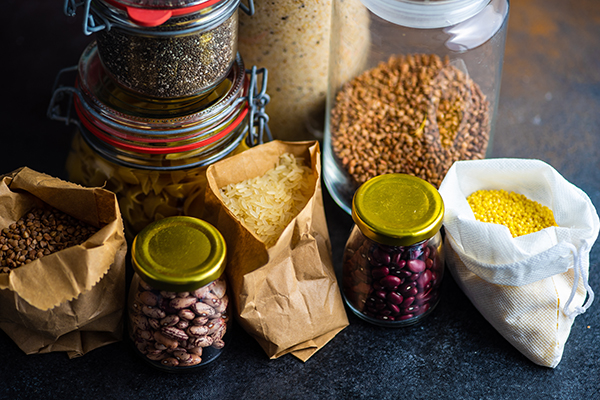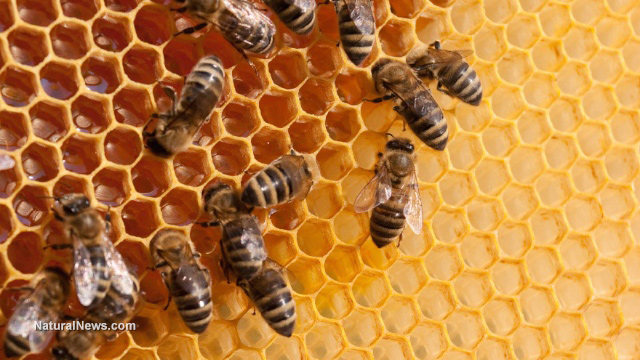Forgotten food survival secrets: How ancient preservation techniques can save your family when modern systems fail
06/03/2025 / By Lance D Johnson

There’s a reason supermarkets didn’t exist for 99% of human history — and yet, our ancestors thrived. While modern consumers rely on fragile supply chains and electricity-dependent refrigeration, traditional cultures mastered food preservation methods that kept them alive through wars, famines, and brutal winters. Today, as supply chain disruptions and economic instability loom, these forgotten techniques aren’t just history — they’re a survival necessity.
From the Pennsylvania Dutch’s probiotic-rich sauerkraut to West African-inspired fermented hot sauces, these methods were born out of necessity and perfected through generations of trial and error. They didn’t just preserve food — they enhanced its nutrition, making it a lifeline when fresh produce was scarce. Now, as food prices skyrocket and shortages become commonplace, these old-world skills are more relevant than ever.
Key points:
- Fermentation, curing, and drying were essential survival techniques for immigrant and indigenous communities.
- Traditional methods like nixtamalization (alkaline corn processing) unlock hidden nutrients, preventing malnutrition.
- Salt-cured meats, smoked fish, and fermented vegetables provided year-round nutrition without refrigeration.
- Modern adaptations of these techniques can be safer and more efficient while maintaining their survival benefits.
- In a crisis, preserved foods become valuable barter items when currency fails.
The science of survival: How cultures preserved food against all odds
German sauerkraut: Fermentation as medicine
The Pennsylvania Dutch didn’t just ferment cabbage to avoid waste — they engineered a survival food. Lacto-fermentation (driven by Leuconostoc and Lactobacillus bacteria) was a microbial alchemy that transformed humble cabbage into a nutrient-dense staple. During the Revolutionary War, German mercenaries carried sauerkraut in their rations to prevent scurvy — a practice later adopted by the Continental Army.
Scientific benefits:
- Gut health: The probiotics in sauerkraut (up to 28 strains) out-compete pathogenic bacteria, critical when medical care is scarce.
- Vitamin C: Fermentation increases bioavailability by 20% compared to raw cabbage.
- Longevity: Properly fermented kraut (pH <4.6) inhibits mold and C. botulinum growth.
Modern recipe with safety tweaks:
- Cabbage selection: Use late-season, dense heads (higher sugar content for fermentation). Discard outer leaves (pesticide risk).
- Salt ratio: 2.25% by weight (3 tbsp non-iodized salt per 5 lbs cabbage). Iodized salt inhibits fermentation.
- Fermentation vessel: Food-grade HDPE bucket with airlock (replaces cloth cover) to prevent oxidation and kahm yeast.
- Temperature control: 65–72°F (18–22°C) for 3–6 weeks. Use a seedling heat mat in cold climates.
- Testing: pH strips (target 3.4–3.8) and brine salinity (1.025 specific gravity) ensure safety.
Storage:
- Canning: Process jars in boiling water for 10 minutes (for shelf-stable storage).
- Cold storage: Refrigerate for up to 12 months; flavor improves over time.
- Survivalist tip: Add foraged juniper berries (natural antimicrobial) or wild garlic ramps for extra vitamin C.
Italian sun-dried tomatoes and salt-cured meats
Sicilian immigrants replicated Mediterranean sun-drying on New York tenement fire escapes. The salt-cured meats (e.g., prosciutto, capocollo) were born from necessity — preserving scarce protein without refrigeration.
Sun-Dried tomatoes (traditional method):
- Tomato prep: San Marzano or Roma tomatoes, halved, seeds scooped (reduces moisture).
- Salting: 1/4 tsp coarse sea salt per pound draws out moisture and inhibits bacteria.
- Sun-dried: 3–5 days on wooden racks with cheesecloth (rotate to follow sun).
- Dehydrator: 135°F (57°C) for 8–12 hours (modern alternative).
- Oil-packed: Sterilize jars, layer tomatoes with fresh basil/garlic, cover with olive oil (1-inch headspace). Water-bath process for 25 minutes.
- Dry: Vacuum-seal with oxygen absorbers for 2+ years.
Prosciutto (survival protein):
- Cure: 4:1 salt-to-sugar rub (per 10-lb pork leg). Add black pepper and bay leaves for flavor.
- Curing phase: 3 weeks at 34°F (1°C), turning daily. Rinse, then air-dry at 55°F (13°C), 60% humidity for 9–12 months.
- Modern hack: Use a wine fridge with a humidifier for controlled aging.
- Prepper note: Sun-dried tomatoes are calorie-dense (300 kcal/100g) and rich in lycopene (antioxidant).
Scandinavian lutefisk and fermented fish
Nordic settlers adapted lutefisk (lye-treated cod) from Viking-era stock fish. The lye (sodium hydroxide) breaks down proteins, creating a gelatinous texture that lasts for years. Fermented herring (surströmming) was a starvation food — its putrid smell signaled safe fermentation (harmful bacteria couldn’t survive the pH extremes).
Lutefisk (Step-by-Step):
- Desalting: Soak dried cod in cold water (5 days, changing water 2x daily).
- Lye bath: 1 oz food-grade lye per gallon water. Soak fish 2-3 days (use plastic tools!).
- Neutralization: Soak in freshwater for 4 days (test pH = 7).
- Cooking: Simmer at 180°F (82°C) for 10 minutes — overheating turns it to mush.
Gravlax (Simpler Alternative):
- Cure: 1 cup salt + 2 cups sugar + 2 tbsp peppercorns. Bury salmon fillets in cure for 48 hours.
- Fermentation: Optional—add whey starter for tangier flavor (extends shelf life).
Surströmming (Advanced):
- Ferment: Layer herring with 3% salt in a wooden barrel. Weight down for 6–8 weeks at 60°F (16°C).
- Bury: Seal in jars and bury for 2 months (pressure builds—open outdoors!).
- Modern Hack: Use pH meters to monitor fermentation (target pH 4.5 for safety).
The survivalist advantage: Why these methods outlast modern food systems
When the power grid fails, freezers become useless, and canned goods run out, traditional preservation methods remain viable. Fermentation crocks need no electricity. Salt-cured meats require no refrigeration. Solar dehydrators work even when the economy collapses.
More than just emergency backups, these techniques offer better nutrition than processed “survival foods.” Nixtamalized corn, for example, provides complete protein — a critical advantage when meat is scarce. Fermented vegetables supply probiotics that boost immunity — something freeze-dried meals can’t match.
Ten cultural foods that ensured survival
- German sauerkraut – Fermented cabbage rich in vitamin C and probiotics.
- Italian sun-dried tomatoes – Concentrated flavor and nutrients without canning.
- Scandinavian lutefisk – Lye-treated cod that lasted for years.
- Southern country ham – Salt-cured and smoked for long-term storage.
- Native American nixtamalized corn – Alkaline-processed maize with enhanced protein.
- Cajun tasso ham – Spicy, cured pork for flavor and preservation.
- Korean kimchi – Fermented vegetables with antimicrobial properties.
- Jewish pickled herring – Vinegar-cured fish that resisted spoilage.
- Russian kvass – Fermented bread drink packed with nutrients.
- Mexican mole paste – Chili and chocolate mixture preserved with fat and spices.
Safety first: Avoiding deadly mistakes
While these methods are time-tested, modern scientific observations have refined them for safety. Botulism — a deadly risk in improperly canned foods — can be prevented with pH testing and pressure canning. Fermentation should always keep vegetables submerged under brine, and cured meats must reach specific salt concentrations to deter pathogens.
Our ancestors didn’t just survive — they thrived, using methods that modern society has foolishly abandoned. In an era of looming food shortages, relearning these skills isn’t just nostalgic — it’s a matter of survival. The next real crisis won’t be solved by panic-buying at Walmart; it will be weathered by those who know how to make food last without electricity or government assistance.
Sources include:
Submit a correction >>
Tagged Under:
ancestral wisdom, cultural foods, curing meats, dehydration, emergency preparedness, fermentation, Food Preservation, food safety, food security, Food storage, historical techniques, homesteading, long term storage, nixtamalization, Off Grid living, prepper pantry, salt-curing, self sufficiency, survival skills, traditional foods
This article may contain statements that reflect the opinion of the author
RECENT NEWS & ARTICLES
COPYRIGHT © 2017 COLLAPSE.NEWS
All content posted on this site is protected under Free Speech. Collapse.news is not responsible for content written by contributing authors. The information on this site is provided for educational and entertainment purposes only. It is not intended as a substitute for professional advice of any kind. Collapse.news assumes no responsibility for the use or misuse of this material. All trademarks, registered trademarks and service marks mentioned on this site are the property of their respective owners.





















